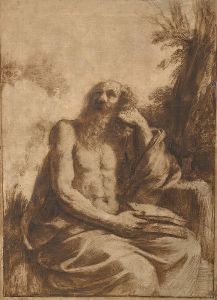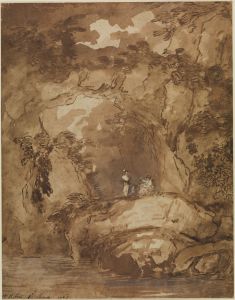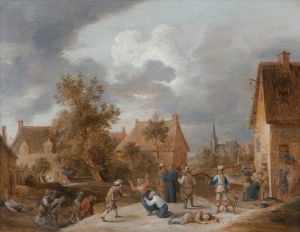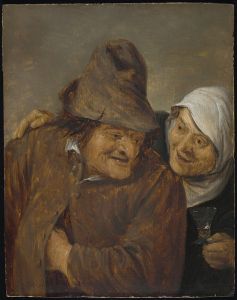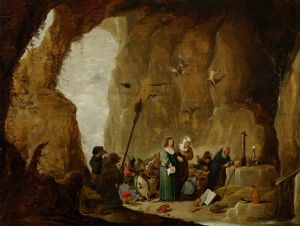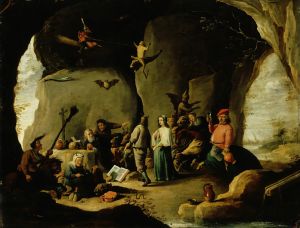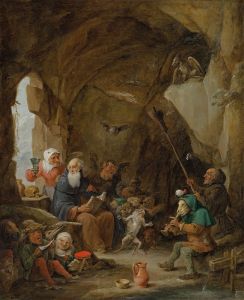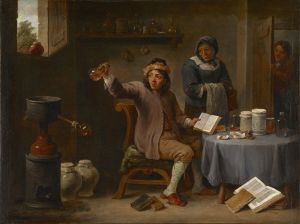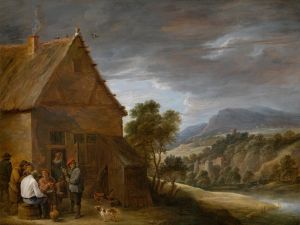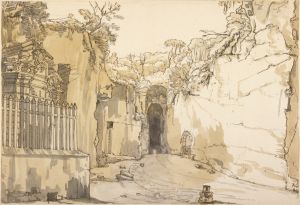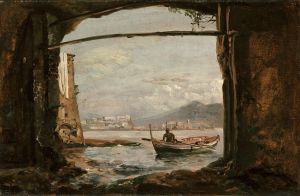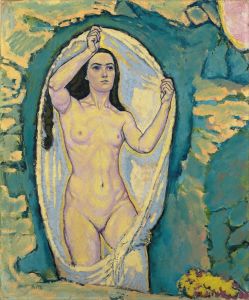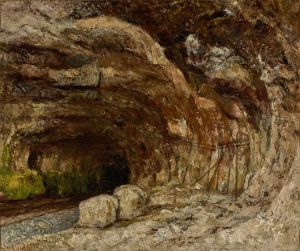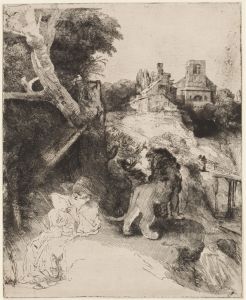
A landscape with Saint Jerome outside a grotto
A hand-painted replica of David Teniers The Younger’s masterpiece A landscape with Saint Jerome outside a grotto, meticulously crafted by professional artists to capture the true essence of the original. Each piece is created with museum-quality canvas and rare mineral pigments, carefully painted by experienced artists with delicate brushstrokes and rich, layered colors to perfectly recreate the texture of the original artwork. Unlike machine-printed reproductions, this hand-painted version brings the painting to life, infused with the artist’s emotions and skill in every stroke. Whether for personal collection or home decoration, it instantly elevates the artistic atmosphere of any space.
David Teniers the Younger was a prominent Flemish artist known for his contributions to genre painting and his depictions of everyday life in the 17th century. Among his extensive body of work is the painting "A Landscape with Saint Jerome outside a Grotto." This artwork exemplifies Teniers' skill in combining religious themes with detailed landscapes, a common practice in his oeuvre.
The painting portrays Saint Jerome, a Christian scholar and translator, who is often depicted in art as a hermit in the wilderness. In this particular work, Saint Jerome is shown outside a grotto, which serves as his hermitage. The grotto setting is significant as it symbolizes the saint's retreat from the world to focus on spiritual contemplation and scholarly pursuits. Teniers captures this narrative by placing Saint Jerome in a serene and contemplative pose, often with a book or a skull, which are traditional symbols associated with him. The skull represents mortality and the transient nature of life, while the book signifies his scholarly achievements, particularly his translation of the Bible into Latin, known as the Vulgate.
Teniers' landscape is not merely a backdrop but an integral part of the composition, reflecting the artist's mastery in rendering natural settings. The landscape is lush and detailed, with a careful depiction of trees, rocks, and the play of light and shadow. This attention to detail enhances the contemplative mood of the painting and underscores the theme of solitude and reflection.
The painting also reflects Teniers' ability to blend elements of realism with a subtle sense of the divine. While the landscape is realistic, the presence of Saint Jerome imbues the scene with a spiritual dimension. This duality is a hallmark of Teniers' work, where the ordinary and the sacred coexist harmoniously.
David Teniers the Younger was part of a family of artists, and he was heavily influenced by his father, David Teniers the Elder, as well as by the works of Peter Paul Rubens and Adriaen Brouwer. Teniers' work was highly regarded during his lifetime, and he enjoyed the patronage of notable figures, including Archduke Leopold Wilhelm of Austria. His ability to capture the essence of his subjects, whether in religious or genre scenes, made him a sought-after artist in the Flemish Baroque tradition.
"A Landscape with Saint Jerome outside a Grotto" is a testament to Teniers' skill in integrating narrative and environment. The painting not only serves as a religious allegory but also as an example of the artist's adeptness at landscape painting. It reflects the broader trends of the time, where religious figures were often placed in natural settings to emphasize their connection to the divine and the natural world.
Teniers' work remains significant in the study of 17th-century Flemish art, and "A Landscape with Saint Jerome outside a Grotto" continues to be appreciated for its artistic and historical value. The painting is a fine example of how Teniers could convey complex themes through a harmonious blend of figure and landscape, making it a noteworthy piece in his extensive portfolio.





